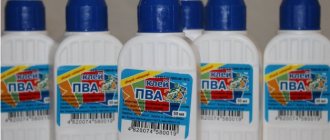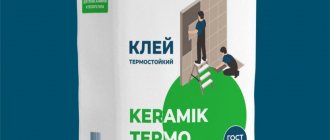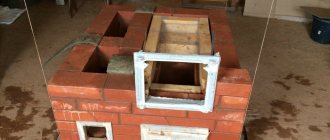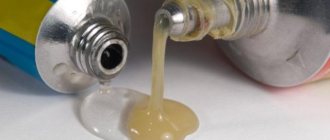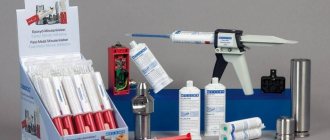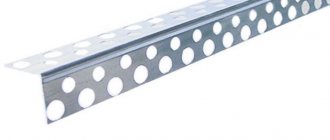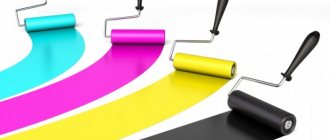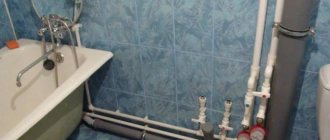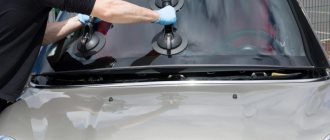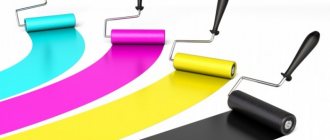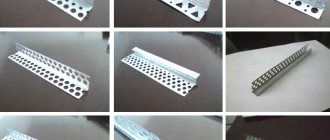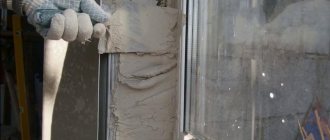Leather glue may be needed for repairing clothes, shoes and furniture, for home crafts, making crafts and souvenirs. To fasten natural leather and leatherette, adhesives with completely different compositions are used - based on rubber and polyurethane, polyamide, perchlorovinyl and polyvinyl acetate substances. It is worth understanding their features and rules of use.
What is known about natural and artificial leather (leatherette)
Before you learn how to glue leather, you need to consider what kind of material it is and what types there are.
There are several types:
- Artificial leather is granite, vinyl artificial leather, stretch leather and others. Leatherettes at a lower price, which are made from polymers. In appearance it is not much different from the natural one. It loses in terms of performance characteristics, however, it withstands mechanical stress better.
- Genuine leather is the most expensive option, which is used for sewing clothes, various accessories, making furniture, and finishing car interiors. It is comfortable to wear and durable.
- Recycled is an analogue of leather, made from natural scraps and parts.
- Eco-leather stands out as a separate group.
This is a modern material that is quickly gaining popularity.
Leather comes in vegetable and chrome tanning.
In addition to tanning methods, they are divided into:
- clothing;
- haberdashery;
- lining;
- furniture;
- shoe
They are made from bulls, sheep, goats, pigs, calves, and exotic animals.
According to the processing method, they are distinguished:
- suede leather;
- split wood;
- nubuck;
- perforated;
- embossed and some others.
According to the coating processing method:
- Painted with nitro paint, a relief created by a press.
- Uncoated - painted, but not further processed.
Eco leather
This is a combination of a polyurethane base with synthetic fibers. After launching into production, the number of animals killed to obtain natural material decreased.
Several strengths have been noted for which modern manufacturers and buyers value it:
- Various color variations.
- Resistance to mechanical stress.
- Less expensive production process.
- Visually, the pattern is difficult to distinguish from genuine leather.
- Easy to process and stitch.
- Durability, wear resistance.
- Low hygroscopicity.
- Does not cause allergic reactions.
To connect two separate parts made of this material, you can sew them, or use eco-leather glue.
How to clean the surface?
In some cases, it is necessary to remove glue from a leather product. There are several ways to do this. You can, for example, use nail polish remover. The treated area is moistened with solvent and left for an hour. After this time, the area is wiped with a soft brush. In some cases, the procedure must be repeated several times. Sometimes bar or liquid soap or rich cream is used to clean the surface. To remove superglue, you need to use Dimexide. It is sold at the pharmacy. A cotton swab is moistened in the solution and the contaminated area is treated with it. You can also use heat or freeze the area to remove superglue. When exposed to high or low temperatures, the composition becomes brittle. In this case, you can scrape it off with a pumice stone or a nail file. Stores also sell a special “removal” for glue. With the help of a high-quality composition, you can remove even old stains. At the same time, the surface itself retains its integrity. You can clean your hands with the “removal” in just a few minutes.
Main characteristics of leather glue
An incorrectly selected adhesive composition will not provide adequate joint strength and may damage the material. Skin glue must meet certain standards and have characteristic features and properties that you need to learn more about.
There are a number of properties that any adhesive composition for artificial or natural material must have.
These include:
- Resistant to high and low temperatures.
- Optimal viscosity indicators.
- Resistance to long-term exposure to chemicals, water, fats.
- Easy to apply, thick consistency.
- Long working time in a sticky state.
- Should not damage the material after application.
- No allergens in the composition.
- The composition must be free of caustic substances that are hazardous to vision and breathing.
- No strong odor.
- Weather resistance.
- Seam flexibility and strength.
- The seam should not have color or stand out.
It is better to choose elastic, waterproof leather glue from a well-known manufacturer. All these qualities must be present in the best examples.
Features of the compositions
Due to the wide range of products available, consumers often wonder if there is a best leather adhesive. Experts in this case do not give a clear answer. When choosing which glue to use for leather, you need to know the characteristics of the material itself and the performance properties of a particular composition. However, there are a number of characteristics that any mixture used in the work must have. Leather glue must have:
- Good viscosity.
- Elasticity.
- Resistant to fats, oils and water.
- Heat resistance.
Types of glue for natural and artificial leather
There are 4 types of adhesives that are used for gluing leather products:
- Nairite adhesives. The main component of these adhesive masses is cotton rubber. May have a yellowish tint. They are distinguished by optimal indicators of viscosity and density. The average hardening time for a seam is about 3 hours.
- Polyurethane based adhesives. They are a colorless structure that is suitable for gluing leather to different materials. Resistant to prolonged exposure to moisture.
- Rubber-based adhesives. Latex leather adhesives are used for short-term bonding of leather elements to each other and to other materials.
- Silicone adhesives. Suitable for gluing artificial and natural materials. Before applying the adhesive mass, it is necessary to stretch the product, then securely fix it until it dries completely.
If we talk about the division of adhesive compositions according to properties, we can distinguish three large groups:
- Transitional products are products with the PVA-M type designation. The finished seam is soft, due to the water-based polymer.
- Durable and hard are various epoxy resins. The seams are hard and brittle. Suitable for joining thick, tough leather pieces.
- Elastic adhesives are the most popular and popular among the others. Polychloroprene or butadiene-styrene masses diluted with organic solvents. Suitable for joining different types of leather.
The choice depends on what technical characteristics of the finished seam are needed.
Proven glue brands for any skin
When choosing glue for leatherette, eco-leather or natural material, you can easily get confused among the variety of products from different manufacturers if you don’t have practical experience. To choose a high-quality composition, you need to get acquainted with the opinions of people who glued leather products.
Glue liquid leather
It is a liquid glue for leather, on a synthetic basis. Imitates natural material. Strengths include:
- The dried seam is resistant to mechanical stress.
- Has high strength and adhesion.
To glue a patch using this adhesive composition, you need to prepare the base. To do this, it is cleaned of dirt, sanded along the edges of a hole or cut, and degreased. After the mass hardens, a smooth transition is obtained between the patch and the main product.
Desmokol SAR-306
It is a one-component composition based on polyurethane. Suitable for gluing different types of leather, rubber, PVC. Withstands high temperatures and bonds quickly.
Bonding is carried out using two technologies:
- Cold method - the surfaces are covered with an adhesive mass, then joined together, left under pressure for 6 hours.
- Hot method. The first layer of glue is applied to the parts to be joined. Then dry for 20 minutes, the procedure is repeated. After this, you need to heat it to +80 degrees and glue them together.
The hot method allows for faster repairs. Regardless of the method used, it is advisable to use the finished product only after 24 hours.
Nairit 30-E (polychloroprene base)
A sticky mass that resembles honey in consistency and color. Easy to apply, dries quickly. Provides a reliable, durable connection. Most often, positive reviews about Nairit can be seen from shoe repairers. Both hot and cold methods are used for gluing.
Aerosol adhesives
For temporary and permanent bonding of leather products, universal aerosol adhesives can be used. Now they are becoming more and more in demand.
Their main advantages:
- Ease of application.
- Fast drying.
- Universal aerosols are suitable for almost all materials.
When applied carefully, a uniform layer without smudges is obtained. They do not leave stains on different types of fabric.
Crystal moment
One of the most famous adhesive compositions among professionals and people who repaired anything on their own. Suitable for gluing wood, plastic, leather, rubber, glass, porcelain, ceramics, cork, metal, cardboard, paper, fabric.
Should only be applied to clean surfaces. Dries quickly. You can remove hardened glue by rubbing the remaining glue with your fingers.
There are two restrictions when working with the Crystal Moment:
- Not suitable for joining Teflon, polypropylene, polyethylene.
- According to the instructions, it is not recommended to use it for the restoration of dishes in contact with food.
The adhesive is removed from clothing after washing at a given temperature.
Super PVA (based on water dispersion)
Another popular glue for leather products from the Moment company.
Has a number of strengths:
- Hardens quickly.
- Withstands temperature changes.
- High strength of the hardened seam.
- Optimal viscosity.
In addition to joining different types of leather, it is in demand among carpenters for gluing veneer, chipboard, fiberboard, plywood, and laminate.
Rubber adhesives (rubber)
Adhesives for leather and suede, which are used for temporary joining of products. Often they are used to treat areas that will later be stitched on a sewing machine. Disadvantage: low strength after drying. May have a yellowish tint.
There are several tips for working with rubber glue:
- To obtain the desired thickness of the mass, you can dilute it with purified gasoline, which is purchased at a hardware store.
- Remains of the sticky mixture can be easily removed using pieces of rubber.
SMS glue
SMS glue for leather is used for smooth processing of edges and polishing the inside of the leather. A big problem when cutting leather products is end processing. For this, different types of paint and wax can be used. However, according to professionals, SMS glue is considered the best option.
Selecting material for reupholstering the front panel of the machine
The torpedo is constantly in sight, which means its appearance and quality will be striking both to you and to other passengers. The selection of material for reupholstering the front panel should be approached responsibly. Most often, the following materials are used in the interior design of a car:
- leather (artificial and natural);
- Alcantara (another name is artificial suede);
- vinyl.
Genuine Leather
Genuine leather is a good choice for upholstering the front panel. This is a durable material that is not afraid of temperature changes, getting wet and fire. In addition, its surface is resistant to mechanical damage. Of course, you shouldn’t deliberately scratch the skin with a nail, but white stripes won’t appear on it by themselves either. The leather can be easily cleaned of dirt by regularly wiping it with a damp cloth. You don’t have to worry about the panel fading in the sun—it’s not afraid of ultraviolet radiation. And there’s no point in talking about the appearance of genuine leather: it will fit perfectly into the interior of even the most expensive and pretentious car.
Genuine leather gives the car interior a sophisticated look
Eco leather
If you can’t afford genuine leather, use its modern substitute - eco-leather. This type of material is called environmental because it does not emit harmful substances during operation. It doesn't look at all like the cheap leatherette of the late 90s. This is a durable, moisture-resistant and vapor-proof material that can maintain its appearance for a long time. Do not be afraid that the eco-leather coating will crack in a short time. In terms of its performance qualities, the material is not inferior to genuine leather. In addition, eco-leather is suitable for drivers with allergies.
eco-leather has good performance characteristics, but is much cheaper than natural leather
Alcantara
Recently, Alcantara has become one of the most popular materials for interior upholstery, including the dashboard. This is a non-woven synthetic material that feels like suede. It combines a velvety soft surface with easy care and high wear resistance. Just like skin, it does not fade in the sun. High humidity and temperature changes also do not affect it negatively. Many drivers prefer to cover the entire interior with Alcantara to create an atmosphere of home comfort. Others use it to design individual elements to dilute the severity of the leather. In any case, Alcantara is perfect for covering a dashboard.
Alcantara is a synthetic fabric similar to suede
Vinyl
If you want to create an unusual interior design, consider using vinyl films. There is a rich variety of textures and colors on the market today. You can choose a calm black or gray color, or you can find an imitation python fabric in an acid green color. Chrome-plated films, as well as films with a carbon or metallic effect, are very popular. They are even easier to care for than leather. Vinyl films have, perhaps, only one drawback: they are easy to accidentally scratch. But the low price allows you to re-tighten the panel as often as you want.
Using vinyl film you can imitate various materials, including carbon fiber
Car leather glue
Before buying glue for leatherette for cars or genuine leather, you need to pay attention to several important factors.
These include:
- Freezing time.
- Solubility under the influence of chemicals and various aggressive substances.
- Thermoplasticity - it is important to consider the temperature region of your place of residence in order to choose the right adhesive.
The two most popular groups of adhesives are made based on polyurethane and polychloroprene.
Adhesive Mah 800*213 (based on polychloroprene)
The product from the German manufacturer has many positive reviews among professionals. Among its peers, it is a leader in auto repair shops for reupholstering car interiors. The main advantages are resistance to temperature changes and reliable bonding to the prepared base.
Polyurethane UR-600 (Rogneda)
Leather adhesive is flexible, waterproof and very durable. One-component, transparent. Sets quickly and does not contain solvents. Designed for stretchy and plastic materials. They also use it to glue shoes and PVC. With the hot method, full hardness is achieved after 4 hours, with the cold method - 24 hours.
Glue 88-Luxe (Rogneda)
Universal, like the first two. Glues a variety of materials, the seam is resistant to moisture and frost. Durable and elastic. Maintains long-lasting stickiness, this quality helps when working on large areas. According to reviews, it is suitable for skin without problems, but there is a significant drawback - a persistent smell for several weeks after the interior is reupholstered. Curing - 24 hours.
Why do they reupholster the car interior?
There are basically two global reasons why the interior is reupholstered. The first is worn out fabric, the second is tuning. With a good interior, a car greatly increases in value and looks much better. In addition, reupholstery can increase practicality. For example, a leather interior can suppress unnecessary noise and vibration.
Upholstery
When reupholstering, it is not at all necessary to look for the same material as before. It is quite possible to find something radically different, more modern and durable. You definitely need to consult with specialists so that they can guide you on what material is best to take. After all, some of them can not be used throughout the entire cabin, but only in some of its elements. Also, the skin may differ in practicality depending on the class of the car.
Can't be sealed
Many craftswomen and beginners in this business wonder why it is necessary to use glue, and whether it would be easier to sew up the product.
Let us highlight several factors that you need to pay attention to before choosing a method of joining materials:
- Consider the thickness of the skin. If it is large, it is advisable to use an adhesive composition.
- If you need to maintain an attractive appearance, flashing the damaged area will not work.
- Lack of sewing skills, and leather requires special experience.
Glue can be used to reach hard-to-reach places, which is quite difficult with a sewing machine and even more so with a needle and thread by hand. This involves additional work in the form of ripping out the lining and carefully stitching it together “as it was.”
Small damage can be easily repaired. Serious tears are usually stitched up, or glued and stitched. But you will need special needles and strong threads.
General requirements for glue
Very often people are interested in which glue for leather is better. In order to perfectly glue artificial and natural leather, as well as suede, it is necessary to use glue that has the following characteristics:
- Elastic glue is ideal. This is due to the fact that the skin stretches well.
- The glue should not leave visible marks on the surface. This is very important in order to maintain the appearance of the repaired product.
- It is necessary that the glue has sufficient adhesion.
- The most important thing is that the glue is safe for health.
- It is very important that the glue does not have a strong or unpleasant odor.
- And if the glue has a short setting time, it will be much more convenient to work with small parts. If you are gluing a large surface, it is better to choose the glue whose composition remains sticky longer.
Tools and materials for work
Before starting work, you need to prepare tools and consumables.
These include:
- Pieces of leather, selected according to the desired color and size.
- Adhesive composition.
- Scissors, mallet.
- Awl, sandpaper.
- Brushes for applying sticky mass.
- Double-sided tape.
- Any heavy object as a press.
- A few scraps of paper.
The workplace must be cleared of unnecessary things so that nothing interferes with gluing. To ensure that the seam is the desired color, you can use a special adhesive paint for leather.
Preparation
Before you start doing work, the very first thing you need to do is prepare yourself a workplace. To do this, you need to protect the surface of the table, and in some cases, the floor. It should be remembered that the easiest way is to prevent the ingress of glue than to subsequently remove various traces from the decorative finishing of the furniture.
Then the item to be repaired must go through such stages as cleaning, drying and degreasing the surface.
Sealing process, preparation for work
Before gluing artificial leather or natural material, it is necessary to carry out preparation.
Step-by-step instruction:
- Cut a patch from the same material as the product. Its size should be at least 1 cm larger at the edges.
- Align the hole with a sharp blade, trim off threads and uneven surfaces.
- Using a damp cloth, wipe the surfaces, remove dirt, dust, and any debris from them.
- Degrease them after cleaning. Wait until completely dry, do not touch with your hands.
- Use fine sandpaper to sand the areas to be glued.
The preparation process directly affects the final result.
Sequence of work
Car interior reupholstery is divided into several stages:
- replacing covers on previously dismantled chairs;
- replacement of door panels;
- Carrying out upholstery work with armrests;
- updating the upholstery on the ceiling.
This is the sequence in which work is often performed at the station or during independent replacement.
Upholstered ceiling
Step-by-step instructions for updating the interior may vary slightly in different cars, but the general algorithm will be as follows:
- fasteners and fittings are removed in the interior;
- the wiring must be disconnected; to do this, unscrew the battery terminals and, if necessary, disconnect the connectors;
- old upholstery material is dismantled to use it, if possible, as an example for cutting, and the surface is cleaned of dried glue;
- metal surfaces are degreased;
- patterns for future upholstery are formed on cardboard or thick paper;
- the surface of the new upholstery is coated with glue and fixed in place; if necessary, use an industrial hair dryer to smooth out wrinkles;
- After reupholstering the interior with your own hands is completed, the glue has dried, you can return the fasteners and decor to their places.
How to seal a hole in a leather jacket
Leather jackets get damaged sooner or later; buying such a wardrobe is expensive. You can fix your favorite thing yourself. It is important to understand that the repair procedure directly depends on the type of damage. If this is a through hole, then there are two options to sew up the hole using patches, preparing it using the technology described above.
The first method is gluing with a patch facing out:
- Cut out the shape of a hole from several sheets of paper or cardboard.
- Apply glue to the edges of the patch protruding beyond the edge of the damage. Also cover the edges of the hole with it.
- Apply the adhesive composition to the pre-cut paper backing. Press the patch onto the hole with the backing.
- Wait a certain amount of time until a thin film forms on the surface of the glue. This time period is indicated on the packaging.
- Repeat the procedure. Press the patch together with the product to be glued along the glued areas.
Place the item on the work table and place a weight on top. Wait until completely dry.
The second method is gluing the patch from the inside:
- Cut a patch from identical material, which should be 3-5 mm larger than the damage.
- Clean the patch and the edges of the hole from dust and dirt. Wipe them with acetone.
- Apply adhesive to the patch and the edges of the damage from the reverse side.
- Press the edges of the tear as close as possible to each other.
- Wait until the first layer begins to harden, then apply the second.
- Press the patch onto the damage and place the product under a weight until it dries.
We must not forget that ambient temperature directly affects the speed of hardening.
What to cover with leatherette?
"Liquid skin"
This product is excellent for caring for relatively expensive or recently purchased leatherette
. Apply it to the damaged area. Wait until it dries. After some time, the place where the defect was will look the same as the undamaged surface of the product.
Interesting materials:
How to connect Xiaomi Mijia camera? How to connect the Mego channel? How to connect channels on Philips? How to connect channels to TV via the Internet? How to connect droplets to a computer? How to connect a karaoke microphone to a smart TV? How to connect a card to a TV? How to connect Honor 10 to LG TV? How to connect Honor headphones to iPhone? How to connect Honor headphones to a laptop?
Corner break
There are situations when the jacket gets caught on sharp objects, which leads to rupture of the material. To repair the damage, you need to rip the lining with any sharp object.
Step-by-step instruction:
- After turning the jacket inside out, opening the seam near the damage, you need to lay it out in front of you to make it more convenient to work.
- Moisten a cloth with solvent and wipe the area to be treated.
- Cut a patch larger than the damage by 10-15 mm on each side.
- Cover the patch and the edges of the tear with glue. Do not apply adhesive mass to the ends of the material.
- Let the first layer harden for 20 minutes.
- Repeat the procedure.
- Apply the patch to the torn area. Smooth out its edges and place a heavy object on top.
- After 10-15 minutes, turn the jacket back inside. Using a toothpick, apply glue along the edges of the patch.
- Press down with a load for a day.
All that remains is to sew up the lining from the inside.
Repair of leatherette items
In its wearing properties, artificial material is not inferior to natural material. The peculiarity of the leather substitute is that its surface consists of a thin layer of polyurethane component. Therefore, it is worth restoring minor external damage.
For this:
- Pre-degrease the restoration site.
- Clean the edges from fabric fibers and glue them with thin calico from the inside.
- Apply a layer of liquid leather on the front side. To make the material look textured, use a foam sponge.
- In addition to liquid leather, you can use special aerosol paint (MONARCA, DECORIX, CUDO).
- Spray the paint from a distance of 20–35 cm in a thin layer.
- Wait for it to dry and repeat the procedure.
- To make the paint last longer, you can coat the top with a special varnish.
Tear off a whole piece
Repair work is complicated by the fact that the damaged part of the leather clothing is missing. Initially, you need to think about the color of the material that will be added. Some people, for example, cut off most of the jacket with the damaged area and change it to a different color. It depends on the wishes of the owner.
Step-by-step instruction:
- Cut a new piece from leather matched to the color. Using tape, stick it to the tear area.
- Rip the lining along the seam to get to the damage from the inside.
- Apply a previously cut piece of leather to the tear site.
- Remove the tape. Cut the patch along the tear contour. Coat it with glue.
- After gluing, sew up the lining.
You can paint part of the jacket with a special adhesive-based paint.
Gluing
Very often, many people ask: how to glue leather to leather? Before gluing a surface to another, it is necessary to coat it thoroughly, or you can apply the composition to both surfaces. Depends directly on the chosen glue. As for the excess, it is recommended to remove it immediately. After the defect has been eliminated, the items must be left to dry for some time - usually within 24 hours.
When repairing a leather surface, you can often encounter cuts, scratches, and holes. Therefore, you have to install a patch.
Cut on the jacket
You can learn how to seal a cut on a leather jacket from the title about tearing with a corner. The procedure is performed exactly the same.
In addition, professionals give several recommendations that will help during the work:
- The patches are additionally stitched for reliability. You just need to work with a special leather needle.
- It is not advisable for beginners to use quick-drying adhesives. They require a quick workflow, which can cause a number of problems without practical experience.
- To create a unique design and make the patch less eye-catching, fashion designers recommend making several similar patches in a chaotic manner.
The last point is especially interesting for young, creative people.
How to glue leather to wood
Fans of folk art and handicrafts are sometimes faced with a situation where it is necessary to combine leather with wood in the best possible way. This can be the front lining of products, creating the inside of various boxes, toys, souvenirs and much more.
According to experts, there are several options for suitable adhesive compositions:
- Nitroglue – made on a cellulose basis, suitable for thin leather.
- Double-sided tape, which is good as a temporary option.
- Hot glue using a hot glue gun.
Aerosol contact adhesive is also suitable.
Subtleties of repairing artificial leather or suede
It is generally accepted that leather cannot be washed, as it loses fat and becomes rougher. You cannot iron with steam; collagen fibers curl up and, as a result, lose their natural organic properties.
A utility knife is used to cut straight only. In other cases, it is not suitable; for complex cutting, a shoemaker’s knife, a scalpel and some others are suitable.
Acrylic paints can be used to tint leather. But car aerosols are the best; the paint goes on smoothly and firmly, without sacrificing elasticity.
Composition for restoration in a car
Many owners of personal vehicles periodically change the color of the leather upholstery in the cabin. This procedure is called constriction. In the process, using adhesives, leather of the desired color is glued to the seats. In this case, you can use the “Moment” mentioned above. Glue “88” is also popular. But it has a fairly persistent unpleasant odor. However, the fixation itself is very reliable.
How to remove glue from skin
After working with glue, situations often arise when it gets on human skin.
To wipe it off, you can use several methods:
- Rub the remaining glue with your fingers and roll it into a small ball.
- Mix hot water with laundry soap. The stained areas are thoroughly wiped with soapy liquid until the adhesive structure comes off.
- Use sunflower oil. Wet your hands with vinegar and soap them. Wait 10 minutes. Using a swab moistened with oil, thoroughly wipe the dirty areas of the skin.
- Apply white spirit. This solvent can quickly remove adhesive residue from a dirty surface. However, its pungent odor and active components can negatively affect a person’s general condition.
If the above methods do not help, you can use a special chemistry called “Anti-glue Moment”. They need to treat dirty areas, wait the time indicated on the package, and wipe off any adhesive residue. Knowing how to remove glue from leather, you can safely carry out repair work.
Conclusion
Genuine leather is not cheap, which is why not everyone can afford to buy products made from this material after complex damage. You can repair your favorite item yourself to save on the services of a repair shop.
The best glue for leather is extremely difficult to find. Products of even the same name from different manufacturers differ in technical and operational characteristics and can be used for different purposes. Now it has become clear which adhesive compositions are best to use, according to professionals.
The best option is a special glue for working with leather.
In addition, you need to carefully study the gluing procedure. It would be a good idea to practice on unnecessary leather scraps.
What you should pay attention to when choosing glue
Since all formulations differ in color, consistency, method of application and adhesion, when choosing a product it is worth considering several factors:
- does the glue have an unpleasant odor and how long does it take to dissipate?
- whether the composition has the property of staining the fabric, this factor is especially important if a light-colored leather product requires repair;
- whether the glue lays down in an even layer, or whether lumps form, creating an unpleasant visual effect on the leatherette;
- what is the lowest possible temperature for using the composition;
- quality of adhesion, which is necessary for repairing things that are regularly exposed to mechanical stress;
- temperature threshold at which the glue retains its properties.
All this must be taken into account when choosing a composition for work, as well as when determining a method for eliminating damage to a product made from a leather substitute.
